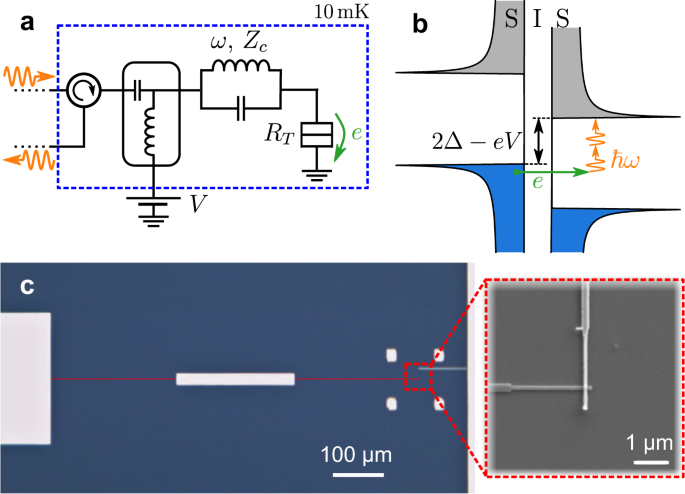In microwave quantum optics, dissipation usually corresponds to quantum jumps, where photons are lost one by one. Here we demonstrate a new approach to dissipation engineering. By coupling a high impedance microwave resonator to a tunnel junction, we use the photoassisted tunneling of quasiparticles as a tunable dissipative process. We are able to adjust the minimum number of lost photons per tunneling event to be one, two or more, through a dc voltage. Consequently, different Fock states of the resonator experience different loss processes. Causality then implies that each state experiences a different energy (Lamb) shift, as confirmed experimentally. This photoassisted tunneling process is analogous to a photoelectric effect, which requires a quantum description of light to be quantitatively understood. This work opens up new possibilities for quantum state manipulation in superconducting circuits, which do not rely on the Josephson effect.
See also an interview of Jérôme Estève for the CNRS (in french).

a Schematic of the experimental circuit. A microwave mode at frequency ω ≈ 2π × 6 GHz, here represented by an LC resonator, is coupled to a superconducting tunnel junction with tunnel resistance RT. The characteristic impedance Zc of the mode is 4.5 kΩ, much larger than in a conventional superconducting resonator. A bias tee and a circulator are used to dc bias the sample while measuring the reflected microwave signal. b When the bias voltage is such that 2Δ − eV > lℏω, the tunneling of quasiparticles through the junction is allowed only if at least l photons (here two) are absorbed from the mode to provide the missing energy. c Microscope image of the sample realizing the circuit shown in a. The resonator consists of two grAl quarter wave resonators (red) connected by a wider Al wire (white). The tunnel junction (Al/AlOx/Al) connects the resonator right end to the ground. The junction area is 150 × 150 nm2, leading to a tunnel resistance RT = 150 kΩ far above the gap. A microstrip Al line connects the resonator’s left end to the measurement circuit. All experiments are performed in a dilution fridge with a base temperature of 10 mK.
Reference
Quantum bath engineering of a high impedance microwave mode through quasiparticle tunneling
G. Aiello, M. Féchant, A. Morvan, J. Basset, M. Aprili, J. Gabelli and J.Estève
Nature Communications, 2022, 13, 7146
doi: 10.1038/s42005-023-01149-5
Contact
Jérôme Estève
